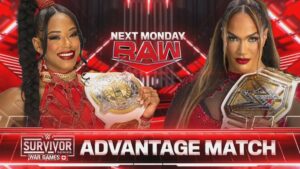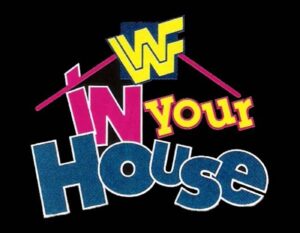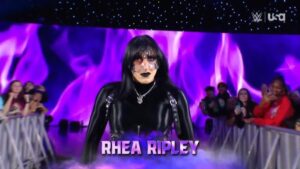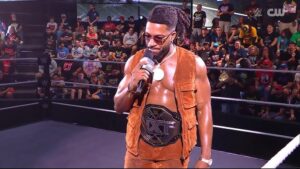The breaking news that Miro (fka Rusev in WWE) has requested his release from AEW comes as no surprise. The rumors have existed for quite a while.
MJF in his Players Tribunal article in December 2023 said no names, yet outlined there were:
“Other established dudes came in, thought of us as a parachute between forgettable WWE runs, and didn’t respect what this was built on — or who it was built by, or why it was built in the first place.”
MJF, Players Tribunal
Within the fanbase, depending on your side, frustration has shifted. From blaming management and Tony Khan for the lack of creative direction, to some fans blaming Miro himself for allegedly refusing creative plans.
Both sides are to blame. Yet, the truth almost becomes subjective due to tribalism and your tastes in wrestling and wrestlers.
The limited evidence of Miro’s run that increasingly became smaller and isolated from the rest of the locker room proved evidence for the latter. Yet, others will still continue to put the blame on Khan as the boss for allowing an employee such freedom.
This is a scene every few weeks with criticism of Mercedes Mone’s alleged “creative control”. There are now plenty of case studies to prove that the benefits of the wrestling war between WWE and AEW will never give us, as wrestling fans, everything we want.
AEW’s existence in many ways shaping wrestling for the better. Yet, some of us are still not happy.
Similarly, despite this war reshaping how wrestlers can gain opportunities and career progression, not all wrestlers are/will likewise be 100% happy.
Flawed High Hopes
It’s only now that some of our high hopes and expectations of how the wrestling war would impact wrestler’s careers have been proven to be overly optimistic. Early into the war (and especially before WWE’s creative Renaissance), there were things that seemed obvious to fans.
Truisms like:
- If wrestler A switched companies and went to company B, they would be “treated better” or a main event player.
- Wrestler C is more suited to the style of promotion B. If he went there, he would be a star.
- Company X overlooks and doesn’t utilize this wrestler. Company Y would be a better fit because they know how to do Z.
These notions haven’t gone away. They apply to fans eyeing up the talent pool on both sides’ rosters.
Alongside those wrestlers competing for TNA, NJPW, and elsewhere who seem like they would “fit” the preferred promotion. And, while there are wrestlers who have proven these ideas right, there are those who haven’t been “treated better” in the way some fans hoped.
Part of that is because, with fantasy booking, it’s easy to forget the real-life variables.
History – They Will Do It Better
I’m a wrestling fan who grew up during The Ruthless Aggression Era. Progressively, that love of WWE was beaten out of me by the humdrum creative of the 2010s.
The creative metaphorically seemed to make it clear that there weren’t glass ceilings but rather glass boxes. Boxes in which wrestlers were placed into categories that you just had to accept and like.
Every now and again, almost on a whim, wrestlers were moved from one box to another without much thought or seemingly care for our feelings as fans. “The Big Dog” Roman Reigns was given free rein whereas guys like Dolph Ziggler and Kevin Owens got shuffled around to fill tight, niche spaces rather than have room to run.
A depressing sense of inevitability took hold. Just because a wrestler was given a bigger box meant they would eventually be moved again – reduced to a smaller and smaller role.
Sure, they could go to TNA, usually for less money and a smaller spotlight in a bigger space, but its own track record of creating stars from ex-WWE guys was more miss than hit. Wrestlers who were already stars like Kurt Angle and Jeff Hardy were always treated well.
There were exceptions such as Gail Kim, Bobby Lashley, and EC3. Yet the “fumbles” like D’Angelo Dinero and guys who had all the potential, like Matt Morgan and Mr Anderson, who plateaued despite big pushes.
In some ways, we should have learned that lesson. To bastardize a Sting quote, the only certainty is nothing is for sure.
But AEW isn’t TNA
At least not until some folks felt it reached that turning point in recent discord. During the global pandemic, various wrestlers were released from WWE to save money despite record profits.
Some fans felt that the company cost itself money by releasing potential future stars. The epitome of WWE’s old, worn, and failing creative and star-making gears.
Perception of AEW was still predominantly positive. Even Hulk Hogan, a man banned from attending AEW events, compared the promotion to “the little engine that could” regarding competing with WWE.
This is the comparison that, in the 1990s, had been used with ECW. A promotion that, besides the hardcore, had a reputation for taking misused talent, hiding their weaknesses, and emphasizing their strengths.
Which, to be fair, AEW has a track record of, in some cases. Look at Sting’s last run – the ascension of homegrown stars like Darby Allin and MJF.
During the pandemic, somehow, AEW was able to put on weekly pro wrestling events with creativity and, although not always outstanding, gave memorable moments that eased the real-life stress. Brodie Lee was transformed into the monster many thought he should always have been.
Lee slaughtered Cody Rhodes and destroyed the old version of the TNT Championship. The brighter moments stood out as hope.
Consider the AEW World Champion, Jon Moxley escaped the WWE prison in his own mini-movie. Only to become the company’s champion in the darkest of periods.
However, Matt Cardona’s missteps and failure to secure a position in the alternative promotion are somewhat forgotten. Or Matt Hardy’s increasingly limited capabilities in-ring that, at first, were covered up.
Likewise, the context that Moxley is an ex-WWE man. Yet, when you look closely, Moxley was never really a WWE wrestler in the same vein as others (read about this here).
The Ecosystem
Simple narratives that can fall into binary thinking can mislead. There was always a risk of failure but emotion as well as the fog of war can cloud this.
AEW started signing up the cream of the crop of the WWE releases. Miro, Swerve Strickland, Keith Lee, Andrade, Malakai Black, Buddy Matthew, Saraya, etc.
Expectations were rightly high. Although, fantasy booking is simple and happens in the vacuum of one person’s imagination.
Imagination doesn’t do or need the real-life context of a promotion or locker room environment. In reality, AEW had an established roster with a hierarchy in place.
The concept that many might just be inserted into specific spots on the notion they “earned it” due to mistreatment and being overlooked in a different company is somewhat entitled. Something that, as fans, we are guilty of projecting when wrestlers don’t get booked how we want.
Yet, as MJF pointed out, some ex-WWE wrestlers might have felt entitled. Wrestling is hierarchical, political, and brimming with bravado and egos.
This is regardless of promotion. Remove the letters and the division of the wrestlers across the card will look like an ecological pyramid.
The higher you go, there are fewer spots. Not everyone can be at the top as the apex predator.
If there is an imbalance, just like in an ecosystem, things don’t work. This is a problem that impacted AEW’s mid-card with the influx of ex-WWE wrestlers who “deserved better”.
Both similarly and ironically, it resulted in the same perception of talent being misused like the WWE of old. Plus, some unique consequences for AEW.
Unseen Variables
1) Culture Change/Shock
There’s a management book called The First 90 Days, which focuses on transitioning successfully into a new job role. One of its early lessons seems applicable to wrestlers moving from one promotion to another.
Transitioning is difficult. You go in expecting one thing, often blind or not realizing that you’re walking into a different world.
Different companies have different cultures, dynamics, and ways of doing things. You can’t always replicate or do something like what you did in the other company.
Different audiences also have different expectations and demands. It’s obvious to say AEW isn’t WWE but, only a few years ago, the general perception of the promotion pre-WWE Renaissance was starkly different.
Much more positive. Promises of freedom, flexibility, and opportunity.
Almost utopian-sounding in some ways. Described as a meritocracy, AEW was said to give opportunities to wrestlers who, in turn, would be pushed based on their performance.
Something that former AEW World Champion Swerve Strickland proved with his rise to the main event. Starting on Rampage and making the best of each opportunity.
Showing flexibility and utility, and increasingly getting over. Strickland has talked also about building a working relationship with Tony Khan.
Strickland worked within the culture. A culture that, as MJF said since his first day at Double or Nothing, did not provide “floaties”.
No script and no safety net. No micro-management like WWE.
The exact opposite. Again, it’s something MJF did not shy away from when praising Moxley, Chris Jericho, and Bryan Danielson.
“They’re the blueprint for established guys coming in and understanding AEW”.
It’s somewhat a recipe for a culture shock to anyone not prepared. Especially when, early on, things don’t go right.
2) The Style – In Ring and Characterisation
AEW’s in-ring style is different. The current storyline with Ricochet trying to work himself out of WWE mode back into indy-God shape hits close to the bone.
Ricochet, for all his flash, like other ex-WWE wrestlers (even those who were indy stars before) is acclimatizing to the AEW pace. Look back at the following wrestlers’ earlier AEW work: Adam Copeland, Adam Cole, Christian Cage, Samoa Joe, and FTR.
It took them time to adjust to AEW’s faster pace. Cage, for all his in-ring IQ, was still sweating and seemed at risk of being blown up at points against Kenny Omega.
FTR did not fully click or reach their peak or potential for a few years. Joe looked diminished and a shell of his former self until he became the King of Television.
Many like Cole and Ruby Soho, on muscle memory, could not help but do the WWE cliched shocked face when opponents kicked out of two. For better and for worse, the indy and versatile buffet of styles and pace does create a learning curve wrestlers have to become alter to.
The problem of being where the best wrestle (as discussed elsewhere) is that things are constantly evolving. And even AEW originals like The Young Bucks and The Elite have fallen victim to this at times.
Likewise, in terms of characterization, what worked in WWE doesn’t necessarily work in AEW. Mone is discovering this.
Still cutting WWE-style promos with stilted delivery and cadence is jarring. Mone has felt fake and detached on the microphone but she’s not the first.
Re-invention is possible; sometimes with management input. See the reinvention of “Timeless” Toni Storm which was not an overnight sensation but a gradual process.
It takes time. Patience and risk.
3) PTSD, Egos and Management
Wrestlers come with baggage and egos. All vary depending on their personality, personal history, perception of themselves, and their value.
These could be influenced by the fandoms and social media’s feelings towards them and their rapport, promises, and understanding from management. The importance of these unseen variables impacts everything on screen and behind.
To quote AEW’s commentator Excalibur, “Half the roster came from the indies, the other half have PTSD.” While a joke, there’s truth to this.
Remember Moxley’s descriptions of feeling ill and anxious because of the uncertainty of what the next draft of the Raw script would have him doing? How experiences of WWE creative have impacted wrestlers’ decisions, enjoyment, or engagement with creative in AEW is something that I won’t speculate on beyond the persistent rumors of wrestlers turning down creative pitches.
The debate on the line between what wrestlers do because they signed a contract and what promoters/bookers allow them to “get away with” is another debate. The point is, it seems to be managed differently to WWE.
For the better of some and worse of others. Tony Khan’s style of management has been heavily criticised online by pundits and ex-AEW wrestlers like CM Punk who lambasted AEW and Khan’s business philosophy in his MMA Hour interview.
There were valid points made. Including how the company should transition to a more corporate business model to keep growing.
However, to ignore that the five-year-old company’s indy mentality has been successful is objectively wrong given their continual existence. Yet for others, like Strickland, MJF, and various ex-WWE wrestlers and indy wrestlers, it works.
There are benefits AEW offers that WWE doesn’t.
Problems in The Ecosystem
The roster bloat caused congestion and a transformation to the way AEW booked matches, storylines, and programming that still impacts the product today. Having so many near-potential break-out top stars created a bottleneck that meant no one could be elevated.
The rotational cast model that remains created a sense of predictability because specific stars needed to be protected. Matches and wins designed to pad win-loss records became obvious.
Clashes between potential stars needed careful booking, relying on old wrestling tropes to protect both parties credibility. Yet, no one is elevated and everyone is equal.
Compounded in some cases by a lack of character development and repetitive booking. For example, Andrade el Idolo constantly looking to buy wrestlers for a faction of frequent losers, only deadening fan investment in Andrade’s potential.
This greed of taking all the shiny new toys available slowly tore away at a perception of AEW as different from WWE. As well as AEW as being a potential utopia for underappreciated wrestlers.
Imperfect Because of Unrealized Potential
In hindsight, there were good matches, moments, and performances from those former WWE talent who some fans believe AEW “fumbled”. This verb neglects those unseen variables mentioned and other real-life issues that impact wrestler’s bookings.
Some of the matches delivered by those wrestlers showed their potential, even if in brief pockets only. Only further compacting frustrations of what could be.
Swerve in Our Glory protected and made Keith Lee look like the juggernaut that NXT fans wanted him to be on the main roster. Right now, we know little about how Lee’s real-life health issues after experiencing COVID that almost killed him impacted his solo run.
Malaki Black’s run in AEW has been contentious and filled with rumors, as well as injuries that have limited his in-ring involvement. And yet, the House of Black remains a consistent part of AEW programming in the trios and tag division.
Miro’s reinvention as The Redeemer, his TNT Championship run, and filmed promos showed a monster heel that, for a time, successfully fit a niche. That might upset some but the issue in the modern age of wrestling with monsters across AEW and WWE is that they have a short shelf life.
For better or worse, monsters must adapt for longevity. Not everyone can fit at the top of the card.
How and why wrestlers ascend to the top is complex (and you can read about it here), along with the ways they achieve success (here). Yet, in both, their involvement and actions are key, along with a bit of luck.
Regardless, for us as fans, even those short stints of glory or regular appearances or success don’t seem enough. In many ways, the “failings” of these wrestlers to achieve long-term main event credibility in AEW is tainted by WWE’s inherent shadow on fan expectations.
Finding/Building a Niche
Ultimately, time has rebalanced our expectations of what joining AEW means for a wrestler’s future. Some lazily use the TNA or WCW comparison.
Others are more aware that what we fantasy book and want is separate from reality. Switching promotions is a risk.
As I’ll discuss also with AEW wrestlers going to WWE later, there are parallels as well as their own unique set of circumstances. If conclusions can be drawn, it’s that those who have gone to AEW from WWE and found success, stability and consistency have adapted and evolved to fit the needs of the company.
This is across the card. Whether midcard talent like Tony Nese and Roderick Strong who remain entertaining, capable of putting on strong wrestling matches that elevate others. Others like Big Cass and Claudio Castagnoli have been able to adapt to various roles in different positions.
These wrestlers have found a way to make it work for them while getting over with the fans. Not everyone can be as versatile at the top of the card as Strickland, Cage, Storm, Danielson or Moxley.
Some like PAC have been integral to AEW and yet hindered by injuries and travel issues. Yet, they still make the most of every opportunity. Others like Marina Shafir have had to be patient to get the spotlight that she is currently getting.
Many hope the same will be true for Athena, who props up the ROH brand. Some like Matt Menard have secured themselves roles with their talents beyond wrestling.
More important than what we want and think, is the wrestlers find some version of happiness someplace. And honestly, if it’s not AEW or WWE, there are more options for them elsewhere.
More From LWOS Pro Wrestling
Header photo – AEW – Stay tuned to the Last Word on Pro Wrestling for more on this and other stories from around the world of wrestling, as they develop. You can always count on LWOPW to be on top of the major news in the wrestling world. As well as to provide you with analysis, previews, videos, interviews, and editorials on the wrestling world. You can catch AEW Dynamite on Wednesday nights at 8 PM ET on TBS. AEW Rampage airs on TNT at 10 PM EST every Friday night. AEW Collision airs Saturday at 8pm Eastern on TNT. More AEW content available on their YouTube






